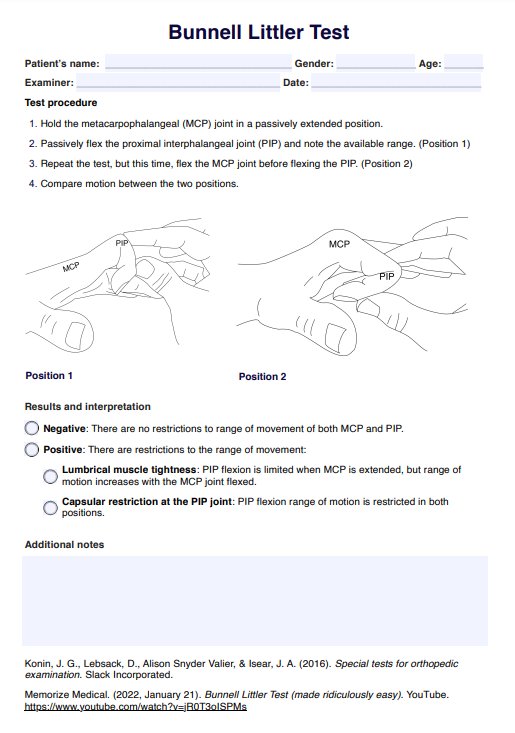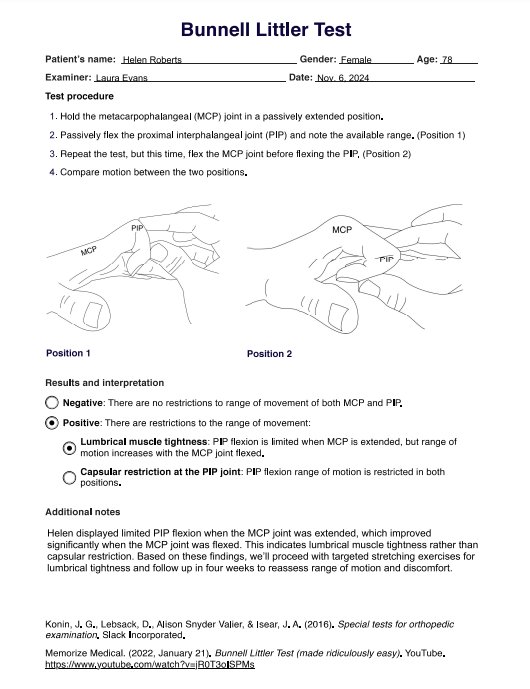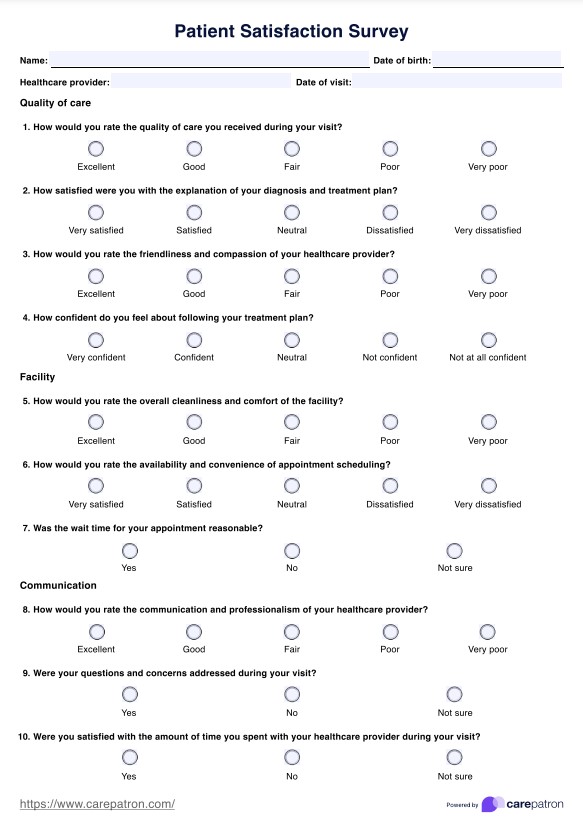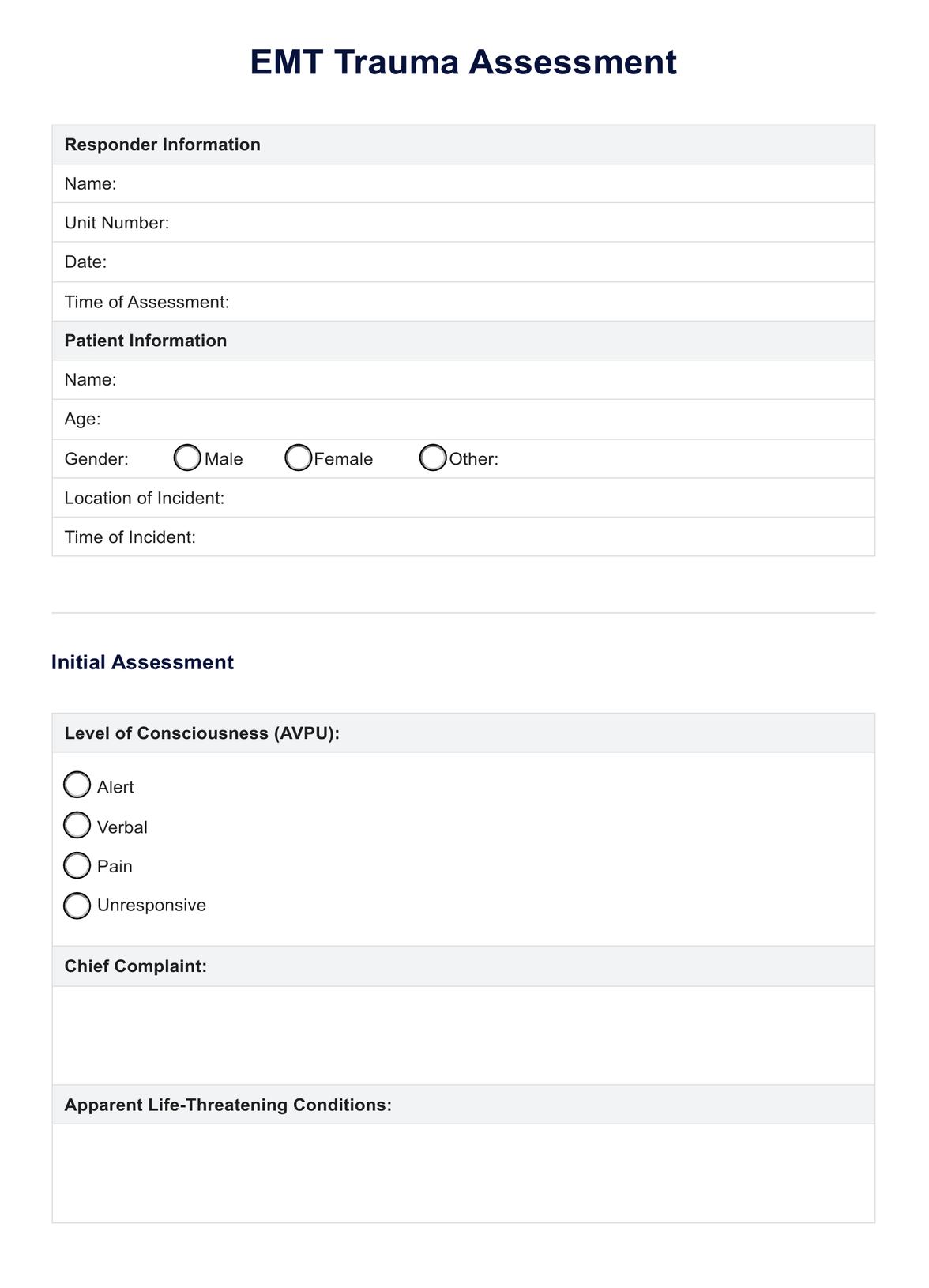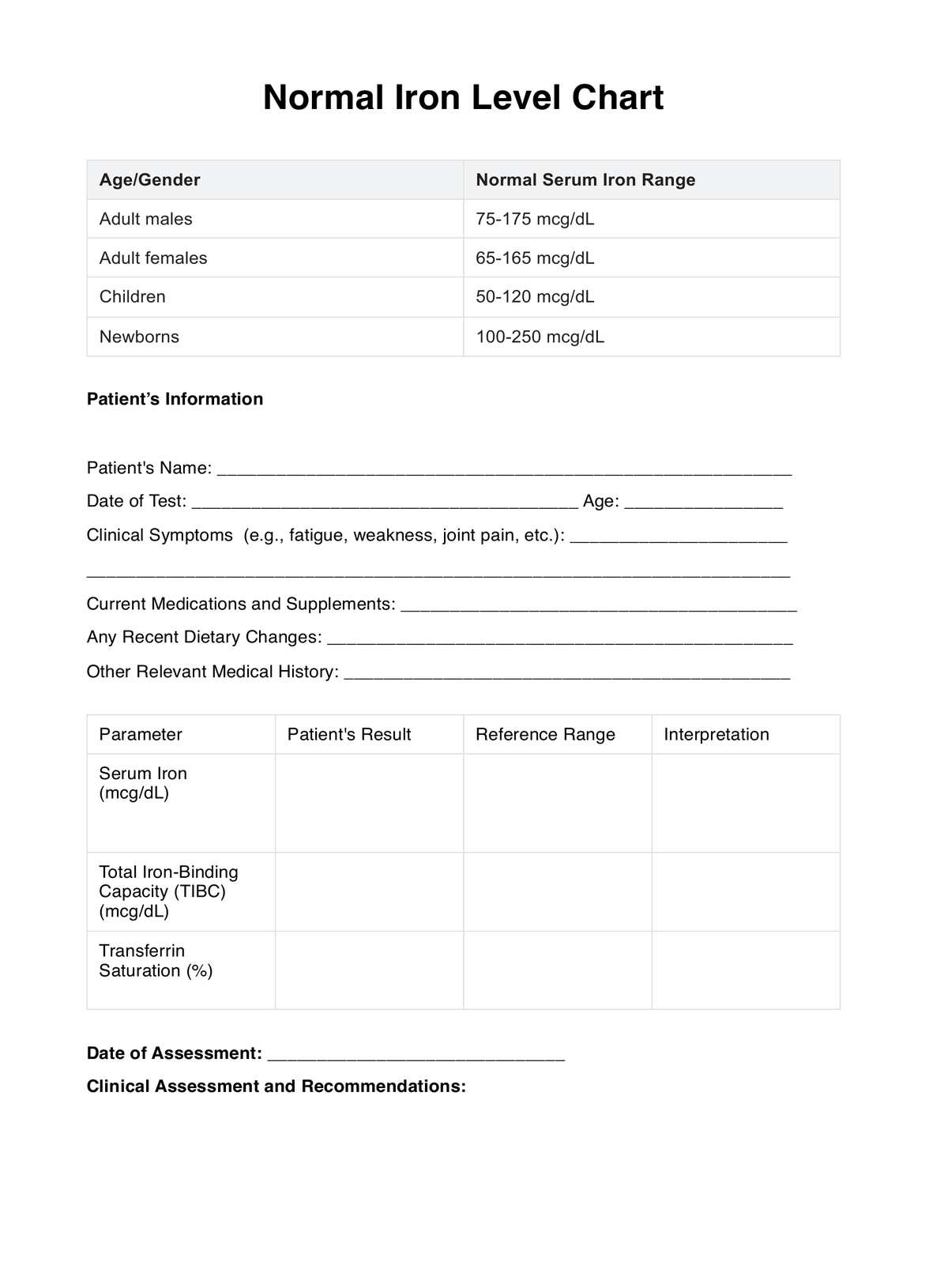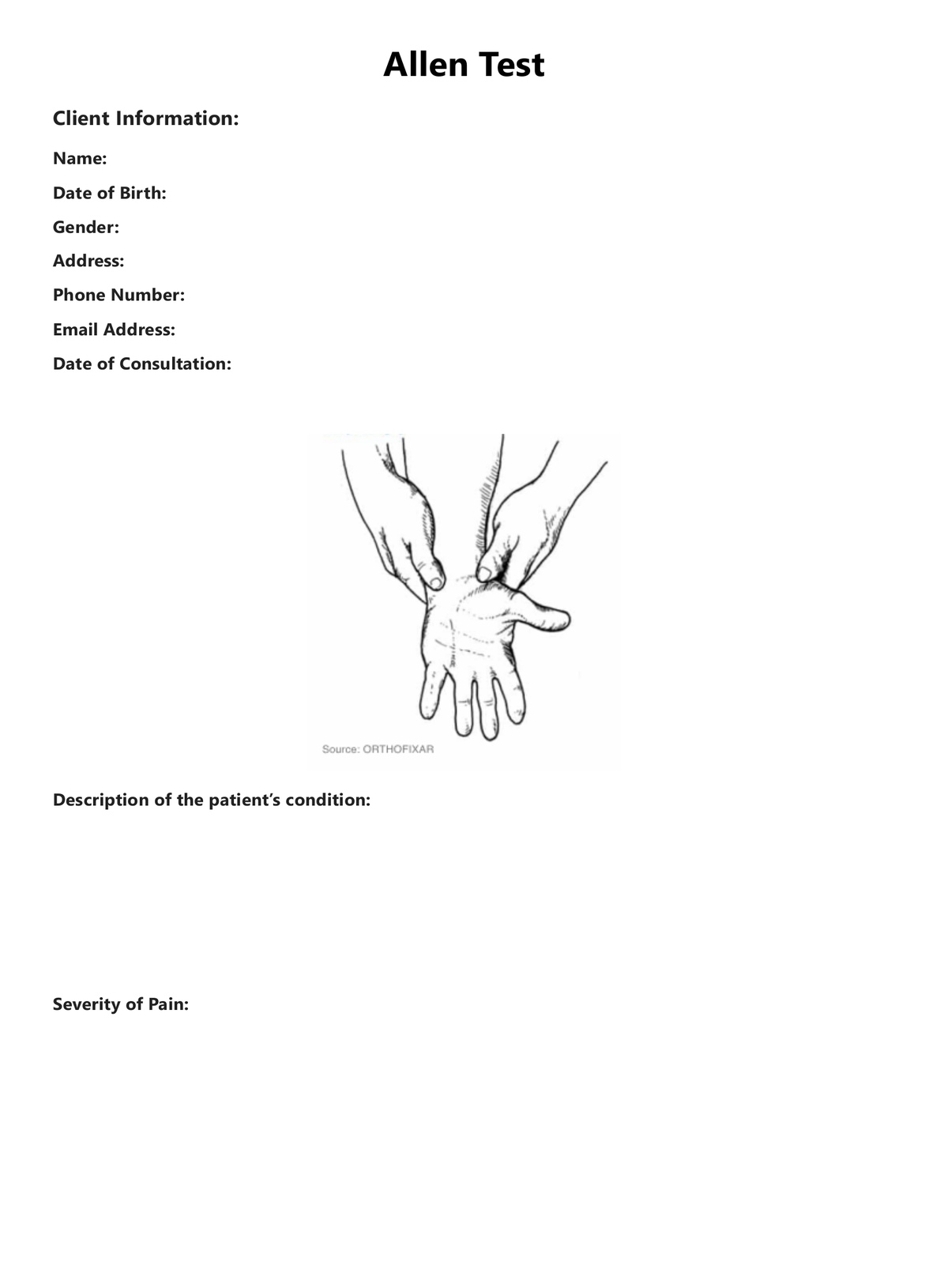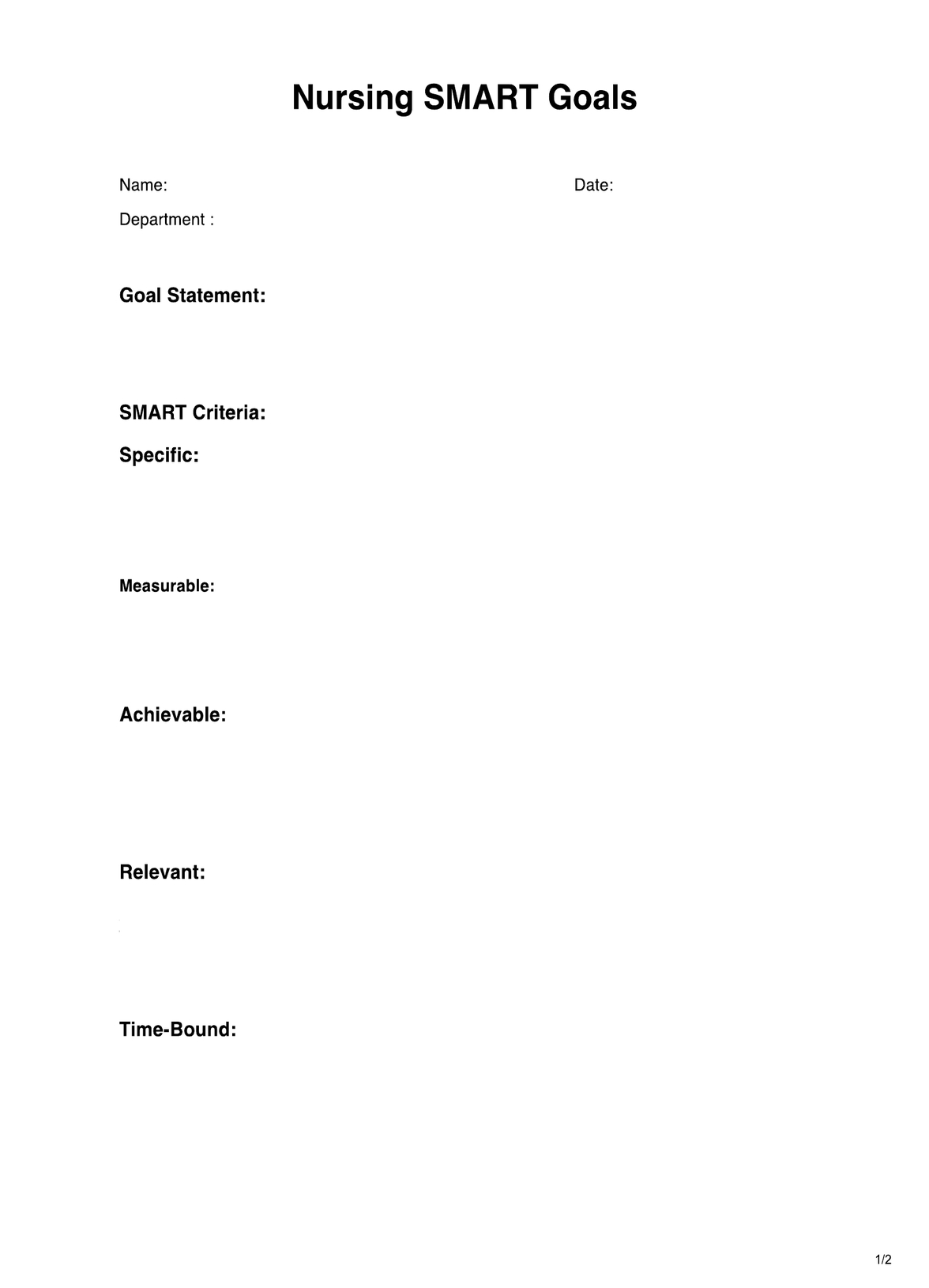Bunnell Littler Test
Learn how to perform the Bunnel Little Test for intrinsic tightness. Use our template for consistent assessment and easy documentation.


What is intrinsic tightness?
Intrinsic tightness affects the metacarpophalangeal joint (MCP) and proximal interphalangeal joint (PIP) in the hand, leading to restricted MCP flexion, limited PIP flexion, and challenges in performing fine motor activities.
Intrinsic tightness can be caused by several factors. Some individuals may have a natural genetic tendency to develop intrinsic tightness, but it may also be caused by certain health conditions such as arthritis, tendonitis, and nerve disorders. It may also be caused by direct injury or trauma to the hand (such as a fracture or dislocation) or simple overuse or repetitive strain.
The most common symptom of intrinsic tightness is difficulty with fine motor activities, such as writing, typing, or holding small objects. Other symptoms may include decreased hand and finger strength, joint stiffness, limited range of motion in the fingers, and pain or discomfort when performing certain movements.
If left untreated, intrinsic tightness can worsen over time, leading to more serious complications. You can perform physical examinations and recommend imaging tests to diagnose intrinsic muscle tightness. These may include X-rays, magnetic resonance imaging (MRI) scans, or ultrasounds.
Other assessments, such as the grip strength test and finger joint range of motion test, may also be used to evaluate hand function and range of motion. The primary tests used to diagnose intrinsic tightness are the Haines Zancolli Test, which tests the PIP and distal interphalangeal joints, and the Bunnel Littler Test.
Bunnell Littler Test Template
Bunnell Littler Test Example
What is the Bunnel Littler Test?
The Bunnell Littler Test is an orthopedic examination used to assess the flexibility of the MCP and PIP joints in the fingers. It involves holding the affected finger at the MCP joint in extension (straightened position) while flexing the PIP joint passively at the end of the finger.
Results from the Bunnell Littler Test help identify whether limitations in finger movement are due to intrinsic muscle contracture or capsular tightness. If the PIP joint demonstrates increased flexion when the MCP joint is flexed, this indicates intrinsic muscle tightness, suggesting that the lumbrical muscles are restricting movement. On the other hand, if PIP joint flexion remains limited in both metacarpophalangeal joint (MCP) extension and flexion, it points to capsular tightness and potential issues within the PIP joint capsule.
The test is crucial for distinguishing between lumbrical muscle tightness and capsular restrictions. It allows healthcare providers to tailor treatment plans that address the specific underlying cause of limited finger mobility. This differentiation guides appropriate therapeutic interventions, such as targeted stretching or manual therapy.
How to use our Bunnell Littler template
Our Bunnell Littler Test template helps you to accurately assess the flexibility of the MCP and PIP joints in the fingers. Follow these steps to get started:
Step 1: Access the template
Click "Use template" to open the template on the Carepatron app. From there, you can customize it, fill it directly, print it, or share it. You can also save a non-customizable PDF copy that you can still fill digitall or print out by clicking the "Download" button.
Step 2: Administer the test
Follow the steps indicated in the template to administer the Bunnell Littler Test. Make sure to extend the affected finger while attempting to flex the DIP joint at the end of the finger.
Step 3: Record the results
Record the results by noting the range of PIP joint flexion in both MCP extension and flexion positions. You may also write notes in the provided field.
Step 4: Interpret and discuss the results
Based on the observations recorded, you can determine if there is any intrinsic tightness in the MCP and PIP joints. Please note that it is best to interpret the results in conjunction with other diagnostic tests for a comprehensive assessment.
Benefits of using our Bunnell Littler Test template
Carepatron's Bunnell Littler Test template is designed to make this assessment process more efficient, accurate, and standardized. By using our template, you can:
- Save time: Our template streamlines the documentation process, allowing you to focus on administering and interpreting the test.
- Improve accuracy: The structured format of our template ensures that all necessary information is recorded accurately.
- Enhance communication: With clear instructions and a standardized layout, our template makes it easier to communicate the results with other healthcare professionals involved in your patient's care.
- Track progress: By keeping all of your Bunnell Littler Test results in one place, you can easily track your patient's progress and identify any changes or improvements in their hand function and range of motion.
Commonly asked questions
The Bunnell Littler Test is commonly used to evaluate intrinsic tightness by assessing the range of motion of the PIP and DIP joints under different MCP positions.
The Bunnell Littler Test identifies whether intrinsic muscle tightness or joint capsule issues restrict PIP joint flexion.
To rule out capsular restriction, the examiner flexes the PIP joint while the MCP joint is extended and again when flexed. If the restriction remains consistent, it indicates capsular restriction.


